If you’ve ever looked at healthcare workers and the personal protective equipment they wear, you would have likely noticed the respirators they usually rely on are N95s (or equivalent) with headbands. This is because, while NIOSH is looking into opening up the standard, it only accepts respirators with headbands for testing.
This is due to the belief that respirators with headbands offer a superior fit to their earloop counterparts. For the most part, this is true. While some earloop respirators fit individuals better than headband variants, we see better fit-test results on average from devices with headbands.
Due to this, there is a common belief among masking enthusiasts and those who rely on high-filtration respiratory protection that earloop respirators are inferior to headband devices. However, this isn’t always true, as everyone is different, and some people get fantastic fit test results with specific earloop respirators.
The biggest issue with earloop respirators is that very few companies have attempted to make high-quality, high-filtration respirators with earloops. After all, NIOSH won’t even certify them due to the belief they can’t provide as good a fit as products with headbands.
Luckily, we’ve seen other, more open standards emerge due to the pandemic. One example is the Canadian Standards Association (CSA) Z94.4.1 respirator standard. While it’s built on the foundations set by NIOSH and is almost identical to the NIOSH standard in testing methodology and requirements, it’s also more stringent in several key ways.
Most pertinently, the CA-N95 standard allows for respirators with earloops. While these respirators must still undergo identical testing to their N95 and CA-N95 headband counterparts, the headbands are no longer a requirement. This is a big step forward, allowing new and innovative earloop respirators to enter the market.
One of these respirators is the brand-new Q100 from CanadaMasq. This respirator is certified CA-N95F-100Pa (don’t worry, I will explain what that all means soon!), and while it has earloops, it has undergone and passed all requirements that an N95 respirator would have to go through. In fact, it’s gone through more stringent testing than N95s do due to the extra requirements set by CSA.
While the Q100 is currently limited in availability due to shipping (it’s only available in the U.S. and Canada), this is a high-quality, high-performance respirator for anyone who prefers the convenience of earloop respirators. However, is it a respirator I can recommend? In this article, I aim to answer that question. Let’s get started with the CanadaMasq Q100 review!
Purchase the CanadaMasq Q100 | Save 10% with code ‘BSA10‘
Subscribe to BreatheSafeAir
Learn about masks & respirators, keep updated with reviews, and more!
This post contains affiliate links. For more information, please refer to my affiliate disclaimer. I was sent a product for review, but the article is not sponsored. All opinions expressed in this post are my honest thoughts. I only recommend products that I genuinely believe in.
Information on this blog is for informational purposes only. Readers are encouraged to confirm the information herein with other sources. Furthermore, this information is not intended to replace medical advice from professionals. This website assumes no responsibility for the accuracy of the information, and information is subject to change without notice. Devices mentioned on this website are not medical devices and do not guarantee protection.
Certifications
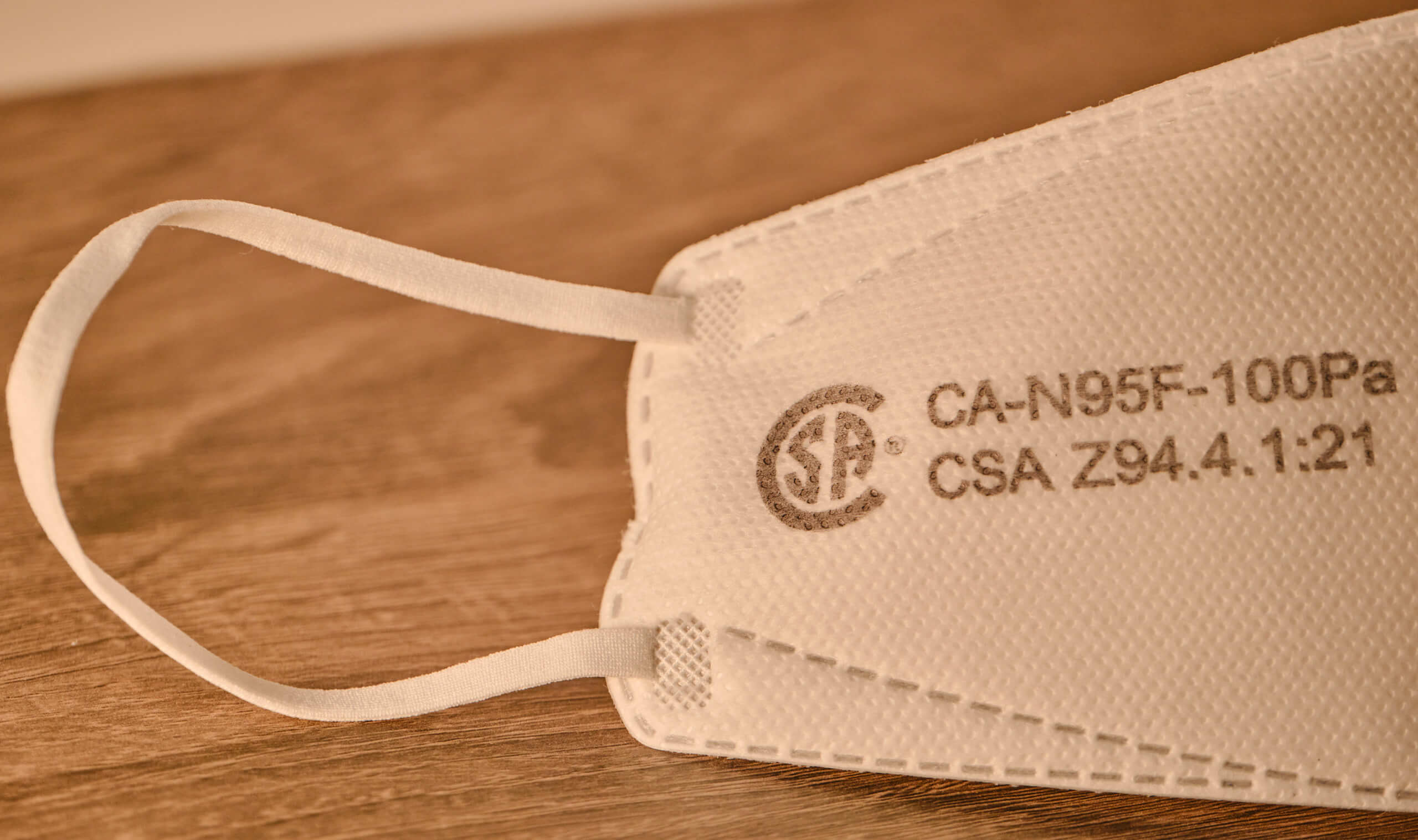
The CanadaMasq Q100 is certified CA-N95-100Pa by CSA. This is a relatively new standard, and many are unfamiliar with it, so I will dive deeper into what exactly this label means very soon. The key takeaway is that this certification is identical to the NIOSH N95 certification in most ways while being more stringent in a few. With this in mind, we can consider CA-N95 respirators the Canadian equivalent of N95 respirators.
With so many different standards out there, it can be hard to keep up with what each standard and classification means. Luckily, understanding respirators certified as per CSA Z94.4.1 is straightforward, as all the necessary information is labelled on the respirator itself. In the case of the Q100, we see the label CA-N95F-100Pa. Let’s dive into what exactly that all means.
The first part of the label is the classification of the respirator. In this case, it is CA-N95F-100Pa, which means the respirator is certified CA-N95 by CSA. In many ways, the Z94.4.1 standard is identical to NIOSH’s 42 CFR 84 standard (the standard that NIOSH uses to certify respirators). The same goes for classifications – N95, N99 and N100 are identical to CA-N95, CA-N99 and CA-N100, except that the Canadian standard is more stringent.

Table from PPE Supply Canada.
The Q100 is CA-N95, meaning it has ≥ 95% particle filtration efficiency at the most penetrating particle size. This testing is carried out with the same flow rates, particles, and particle sizes as N95s. On top of the N95 requirements, the CanadaMasq Q100 has also undergone quantitative fit testing, which is required for all CSA-certified respirators. We will discuss that more in the fit section soon!
The next letter in the Q100 classification is CA-N95F-100Pa. F stands for ‘fluid resistant’, and CA-N95F means the CanadaMasq Q100 is the equivalent of a Sugical N95. While this doesn’t have much importance for the standard consumer, fluid resistance is often required for healthcare workers, and this shows that the Q100 is intended to be a respirator used in healthcare settings. However, there’s no downside in having it for consumers too!
The last part of the Q100 classification, CA-N95F-100Pa, represents the breathing resistance. This is another area in which the CSA standard is more stringent than the NIOSH standard. N95s are required to have ≤ 343Pa inhalation resistance and ≤ 245Pa exhalation resistance. Z94.4.1 breaks this requirement down into three categories – respirators with ≤ 343Pa (inhalation) and ≤ 245Pa (exhalation), ≤ 175Pa, and ≤ 100Pa of breathing resistance.
The lower the breathing resistance, the better, and the Q100 falls into the last category as it’s highly breathable with around 50Pa of breathing resistance. The 100Pa in the classification label shows that the Q100 is within the most breathable category of the CSA standard.
We know from this label that Q100 is a proven performer with a reputable certification. Not only does it display the specifications we expect with ≥ 95% filtration efficiency at a high flow rate, but it does so while being very breathable and offering fluid resistance. Interestingly, CSA is also far stricter in ensuring companies continue to produce respirators to their standards. It takes factory samples every three months – far more regularly than NIOSH’s bi-annual quality control check.
Purchase the CanadaMasq Q100 | Save 10% with code ‘BSA10‘
Fit
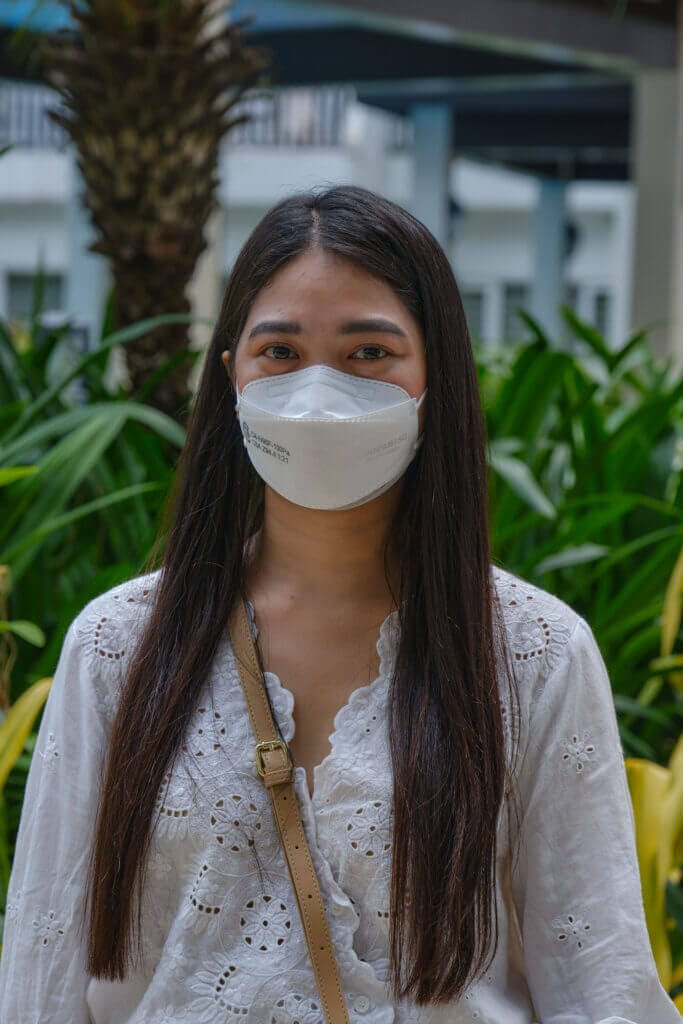
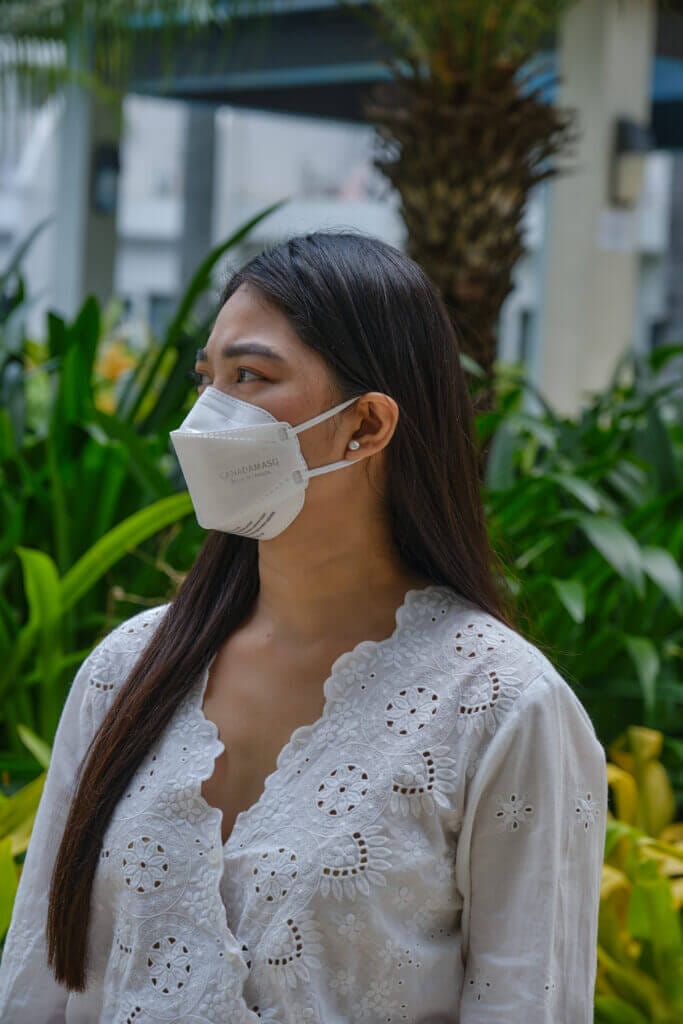
Where earloop masks and respirators often fail is when it comes to fit. This is for a few reasons, but it usually boils down to the earloops being an incorrect size or having a poor material composition. For example, if you compare the earloops on a standard KF94 or KN95 to the headbands on a 3M Aura or VFlex, the difference in quality is instantly apparent. This is why NIOSH has refused to approve earloop respirators in the past (although this will likely change soon).
However, CanadaMasq has taken two steps to ensure these issues aren’t present on the Q100. For one, they’ve created the respirator in four different sizes, ensuring that nearly everyone can find a good fit amongst one of the models. Secondly, the CanadaMasq team spent significant time and money developing an earloop composition that would remain comfortable and fit well. Ultimately, they chose to increase the spandex ratio in the earloops. From my time with the respirators, it seems they achieved both goals.
It’s important to remember that at the end of the day, all experiences with fit are subjective. Fit can vary greatly between individuals, and there’s no way that I can guarantee that a respirator will or will not fit you. Therefore, while I will share my experiences in this section, please remember that they may not apply to you. Furthermore, as with N95s, CSA-certified respirators are intended to be paired with professional fit testing.
Interestingly, the CSA standard requires respirators to be fit-tested with a panel of subjects as part of its certification process. Let’s dive into these results first. As mentioned in the ‘Certifications’ section, the standard is essentially the same as 42 CFR 84, used to approve N95 devices. However, one area where the CSA standard builds on NIOSH is that it requires quantitative fit testing, and each device must have over a 70% pass rate with various subjects of both genders.
Quantitative fit testing is a method used to identify how well a respirator fits. The point of this testing is to discover a ‘fit factor’, which is a count of how many more particles there are upstream (within the respirator) vs downstream (outside the respirator). For example, a fit factor of 100 means 100 times fewer particles in the respirator than outside. If I were to do a fit test and get a result of 150, it would mean I am breathing 150 times fewer particles than I would without the respirator.
OSHA and CSA consider a fit factor of 100 to be a pass. To be approved by CSA, a respirator must be worn by at least 18 people (with a maximum of 70% of the test panel being one gender) performing seven actions (such as turning their head and talking). Across these 18 subjects, at least 70% must pass the fit test, meaning they must have a measured fit factor of ≥ 100. This testing indicates if the respirator can achieve a good fit on most people.
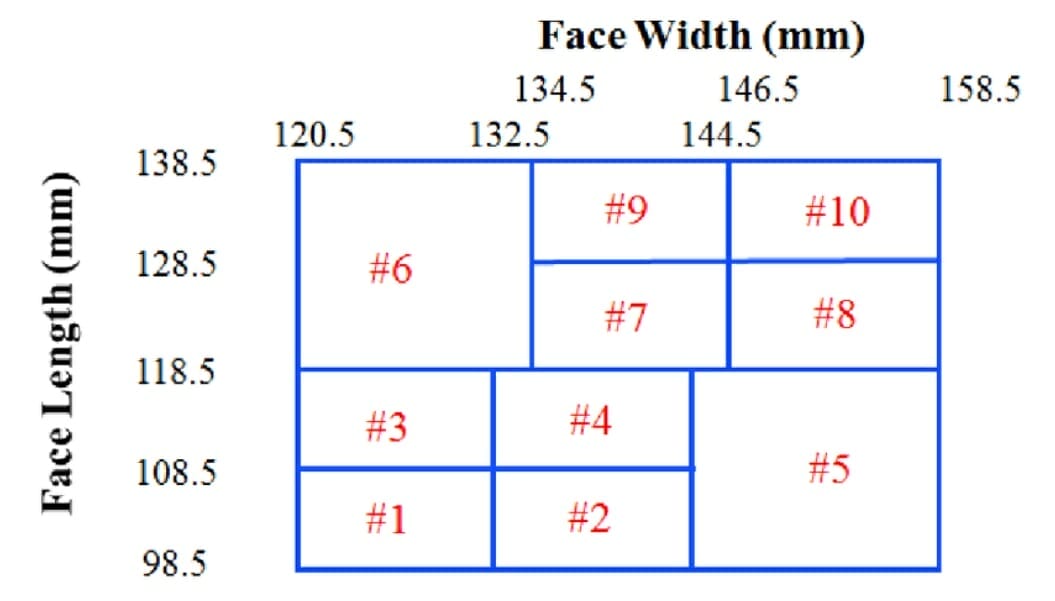
In the case of the Q100, the respirator was worn by 25 people, including children, and 84% of the test panel had a fit factor of ≥ 100. This is a very impressive result – especially for an earloop respirator. Interestingly, three of the four who failed were men with large faces who fit into panels nine and ten on the NIOSH bivariate testing panel. This indicates that the respirator has a fantastic fit rate for those with smaller faces but may not be ideal for anyone with a large face.
This isn’t to say the respirator won’t fit those with large faces, but you are less likely to achieve a good fit if you have a face in one of the largest panels (nine or ten). The flip side is that the Q100 only had one person in all the other size groups who couldn’t pass a fit test, meaning that, for most people, the Q100 can provide a great fit. Of course, to know this for sure, you will still need to be fit-tested yourself.
Now that we’ve discussed the test results, I can discuss my experiences with the Q100. Initially, I was torn between the small and medium sizes. While the small was less comfortable due to its tight fit, it sealed better. On the other hand, the medium was more comfortable, but I was slightly less confident in the fit. I did qualitative fit tests with the masks and could pass with both.
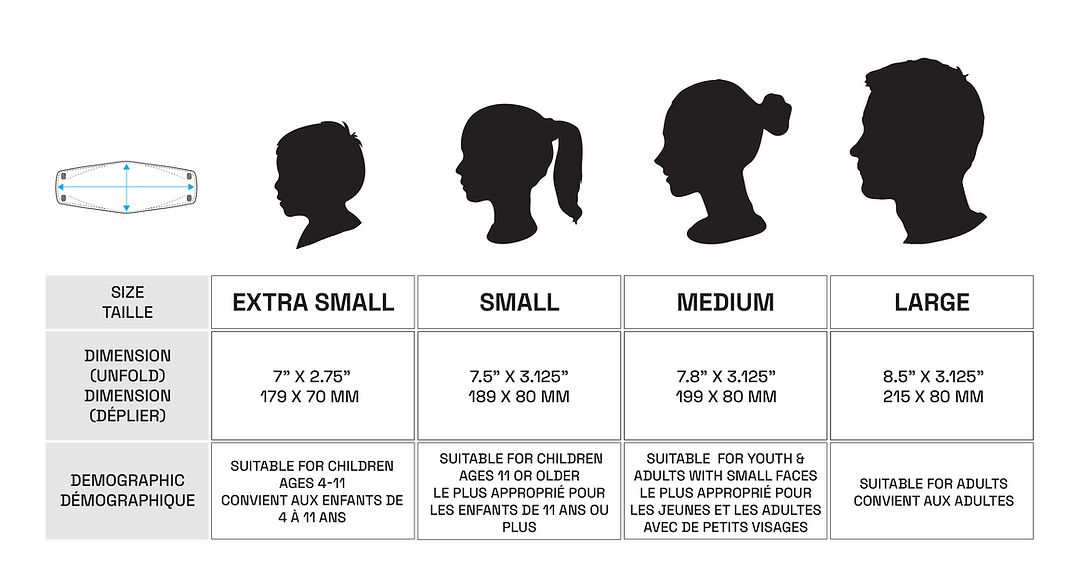
In the end, I decided to use the medium size. If I can pass a qualitative test in both, I figured the best choice is to use the more comfortable size. On the other hand, my girlfriend, who has a slightly smaller face, settled on the small. From the respirator size and the earloops’ length, the extra small size will only fit people with small faces and children.
When it comes to wearing the CanadaMasq Q100, I found it felt very similar to many trifold KN95 and KF94s I’ve worn. While there were slight differences, the overall feel is very similar; however, for whatever reason, where I often find those respirators to be loose and leak, the Q100 provides a much better seal. I believe this is because of the much better earloops.

The nose wire is easily adjustable and sturdy enough to maintain fit even after hours of wear. It’s more easily adjustable than the nose wire on an Aura 1870+ but also slightly shorter and less stiff. I found this pleasant, however, as I could much more easily mould the mask to my face – something that I sometimes have difficulty with on the Aura.
Interestingly, the small Q100 also sealed very well around my girlfriend’s nose. This is interesting because, on most respirators, she struggles to get a good seal because they aren’t designed for flatter noses. The CanadaMasq Q100, however, fit both myself (with quite a tall nose) and her (with quite a flat nose), and this is what I was most impressed with when it came to fit.
Another point of interest is that we both achieved good fits with our chosen sizes without any extra adjustments. The Q100 doesn’t have adjustable earloops, and while CanadaMasq did include some of their clips to turn the earloops into a headband, we never felt the need to use them. The respirators fit well with their standard specifications, and they both fit well and were comfortable. This is one of the first times I can say this about an earloop respirator.
Overall, we were both impressed with the fit of the CanadaMasq Q100. Both in our experience and in the test results, it’s performed very well. In hindsight, if the test results were provided to me without any mention of it being an earloop respirator, I would have assumed that it was equipped with a headband. Even then, it performs well compared to many headband respirators!
Purchase the CanadaMasq Q100 | Save 10% with code ‘BSA10‘
Comfort
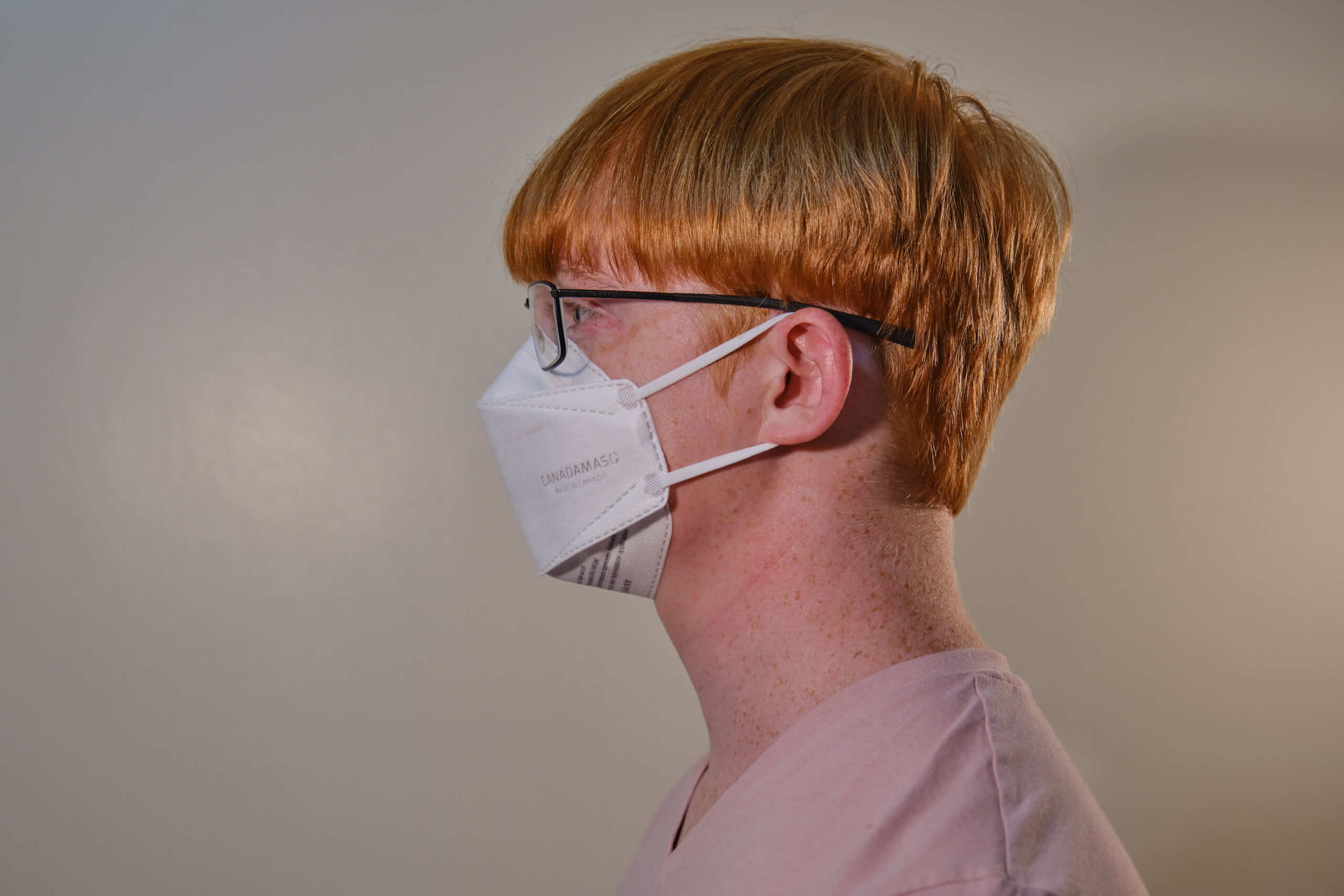
Earloop respirators often suffer when it comes to comfort because they tend to create a balancing act. You can either opt for a better fit and have overly tight earloops, which quickly cause discomfort, or you can go the comfort route and sacrifice some of the fit for comfort.
Even the most comfortable earloop respirators, such as the AirPop Light SE, become uncomfortable for me after a few hours. Alongside the often inferior fit of earloop devices, this is one of the reasons why I often avoid these respirators, or at least don’t wear them without an additional clip to relieve the pressure on my ears.
CanadaMasq’s unique material blend used on the Q100 earloops might not sound like a significant addition, but it makes a world of difference in everyday wear. Not only are the earloops comfortable, but they can be worn relatively loosely while still achieving a solid fit.
Although CanadaMasq does sell an earloop extender (and I received a couple), I never found the need to use these. The respirator was comfortable in daily wear, and even if I needed to wear it for six hours, I found it remained comfortable. With this said, I was in between the small and medium sizes and opted for the larger size, so the earloops were on the looser side. This didn’t impact fit, though.

Outside the earloops, the Q100 remains comfortable primarily due to its exceptional breathability. As we discussed earlier in the article, when talking about the meaning of the CA-N95F-100Pa labelling, the 100Pa is the breathability classification. The Q100 is currently the only CSA-certified non-powered air-purifying respirator with < 100Pa of breathing resistance.
One hundred pascals of breathing resistance is a good result, but it’s not exceptional. However, what makes the Q100’s breathability so fantastic is that it doesn’t just achieve the 100Pa requirement but also far exceeds it. In a recent CSA test, the Q100 had a pressure drop of only 50Pa, making it exceptionally breathable.
This pressure drop puts the CanadaMasq Q100 within the most breathable respirators I’ve tested. The only other respirators and masks with such great breathability are products like ElastoMaskPro, which are very different and don’t compete with the Q100.
With this exceptional breathability, it’s very easy to wear the Q100 even in the most uncomfortable conditions. I’ve been in Vietnam and the Philippines recently, and despite the weather constantly being warm and humid, the Q100 isn’t unpleasant to wear while I’m outside.
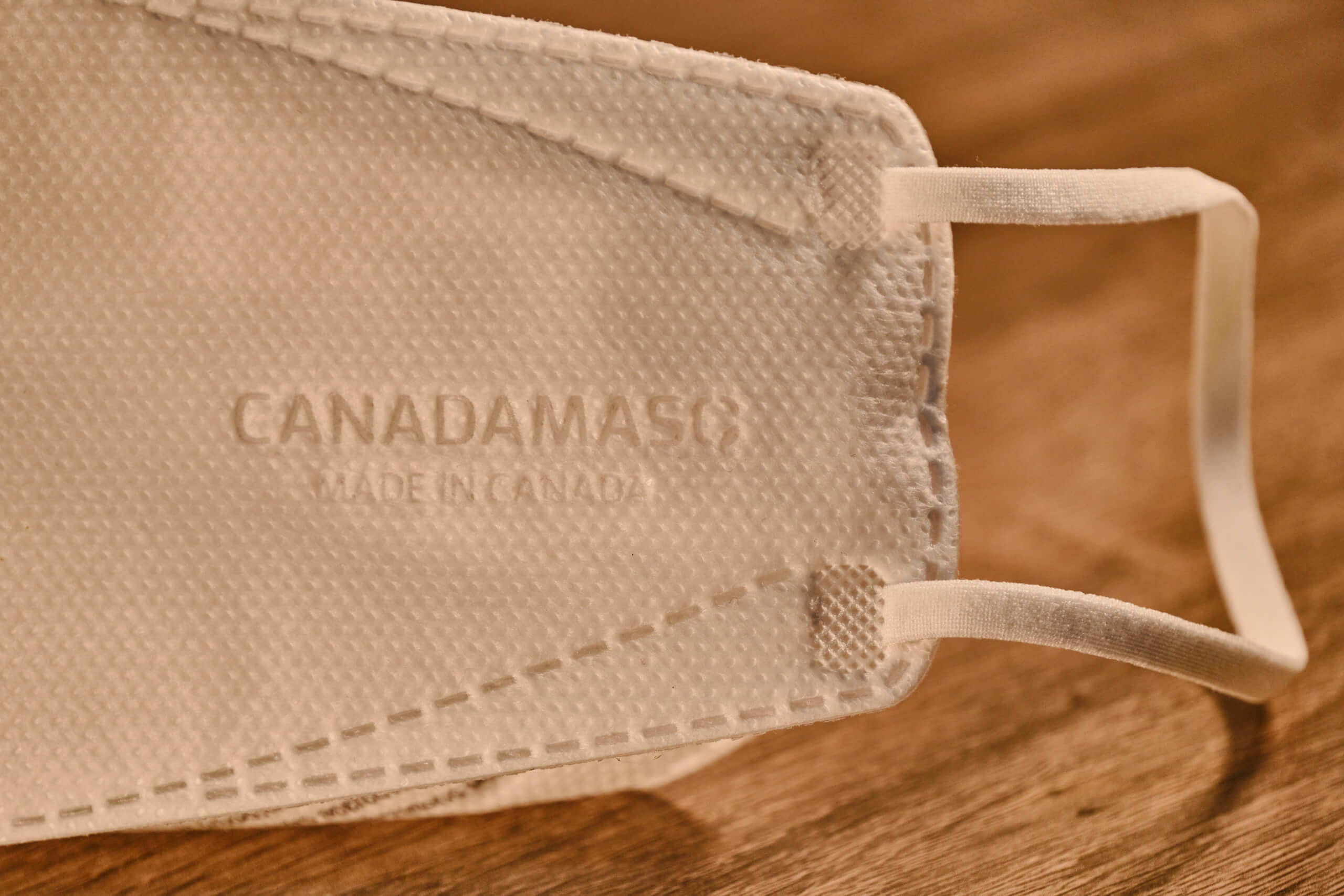
The experience of wearing the Q100 feels very similar to other breathable trifold respirators. If you’ve ever worn a trifold KF94, FFP2 or KN95, you will know exactly the feeling I mean. The issue with these respirators is that while they’re comfortable, they tend not to seal well. With the Q100, you get the benefits of a good fit and comfort.
Overall, I have no complaints about the comfort of the Q100. The respirator is comfortable, and I can easily wear this respirator in any situation. It’s easy to don, and even in warm and stuffy weather, I have no issues with comfort, largely in part to the fantastic breathability of the filter material.
Purchase the CanadaMasq Q100 | Save 10% with code ‘BSA10‘
Pricing and Availability

The CandaMasq Q100 costs 2 – 2.50 CAD (Canadian Dollars), depending on the quantity of respirators you purchase. At the cheapest, you can purchase a box of 50 Q100s for 109 CAD, meaning that individually, they are just over $2 each.
While this is more expensive than many similar-looking KN95s and KF94s, there is certainly an improvement in fit, breathability, and overall comfort with the Q100. These respirators have also undergone more rigorous testing, which costs CanadaMasq a lot, leading to the higher price per mask.
For this reason, comparing the price of the CA-N95 Q100 to the price of NIOSH-approved N95s is a fairer comparison. While the price of an N95 varies greatly depending on the respirator in question, the typical price range is around 1 USD to 2.5 USD, with higher-end respirators such as the 3M Aura and VFlex often being at the higher end of this price range.
Compared to these respirators, the price of the CandaMasq Q100 is reasonable. While you are paying a slight premium for these made-in-Canada respirators, you’re also getting the benefits of better breathability and comfort.
Regarding the lifespan of each Q100, it becomes more complicated. As with N95s, disposable CA-N95 respirators are intended for only one use, which is highlighted in the text on the underside of each respirator. This warning makes sense since the Q100 is intended primarily for healthcare use.
Of course, for general consumers and civilians who want to wear the Q100, replacing the respirators daily is not possible due to the cost that quickly adds up. While the respirator isn’t intended for multiple uses, you can use each device for a few days.
This is how I’ve been using my Q100s, and each respirator lasts me through three or four days of wear. The respirators are well made, and I haven’t had any issues with them being damaged or becoming unusable for whatever reason. If you look after them, they can last at least a few days!
The biggest issue with the Q100 is availability. While the CanadaMasq website offers worldwide shipping, there is only a free shipping option if you live in Canada (and spend over 100 CAD). Since the larger boxes of respirators are quite large, the shipping fees incurred can be significant.
Therefore, these respirators will mostly only be cost-effective for those in either Canada or the U.S. I hope to see this change in the future, as the Q100 is a fantastic earloop respirator, and it’s easily among the best of these respirators that I’ve tried. In the meantime, if you can find a way to offset the shipping cost – perhaps by making a group purchase, this respirator becomes more affordable.
Purchase the CanadaMasq Q100 | Save 10% with code ‘BSA10‘
Conclusion

Q100 with a SIP valve attached.
After using the CanadaMasq Q100 for a few weeks, would I recommend it? Well, to answer that question, I will simply say that this respirator is now my go-to earloop device. While I will continue to use headband respirators often, this has replaced the respirator I normally wear when convenience and comfort are also important. If I’m heading to the supermarket, a cafe, or am out and about for any other reason, this is the respirator I choose to wear.
This is largely because of how comfortable the Q100 is. It’s exceptionally breathable and comfortable for me to wear for many hours. On the other hand, while it’s comfortable, I know that a capable respirator is also protecting me. While comfort is important, it should never be at the sacrifice of filtration or fit.
The Q100 should also fit you well unless you have a large face (in which case it may still fit well, but it does fit smaller faces better). Of course, a professional fit test is required to know this for certain, but the CSA testing for the respirator has shown that it’s more than capable of fitting a wide range of people from all age groups and face types.
The one caveat to my recommendation is the availability. Unfortunately, if you are outside of the U.S. or Canada, the Q100 is rather pricey to get shipped. For this reason, it’s likely too pricey to be worth it if you live outside North America. However, if you can get the respirators with free shipping (or affordable shipping), the pricing is reasonable and in line with other certified respirators you will find on the market.
I wish the respirator were available in other colours, but I understand that a white respirator is the easiest way to display the CSA-required markings. In the future, I hope other colours can be released and that the respirators become more widely available.
Before I sign off, there is also one more comment that I want to make. The Q100 is the only CSA-certified children’s respirator at the time of writing. The fit test panel used by CSA included children, and while I haven’t given the respirator to any children to try, this is likely one of the best respirators available. It’s breathable, comfortable, fits well and is certified according to a stringent standard. If you are looking for a children’s respirator, the CanadaMasq Q100 is worth a look!
Purchase the CanadaMasq Q100 | Save 10% with code ‘BSA10‘
Is the Q100 Lab Tested?
Yes. The Q100 is certified CA-N95 by CSA.
Does the Q100 Have a Certification?
Yes. The Q100 is certified CA-N95 by CSA.
Is the Q100 a Respirator?
Yes. Since the Q100 is certified CA-N95, it is considered a respirator.
Where Is the Q100 Made?
The Q100 is made in Canada.
What Alternatives Are There to the Q100?
There are few high-quality earloop alternatives to the Q100. However, I often wear the AirPop Light SE, another earloop product.
How Breathable Is the Q100?
The breathing resistance of the CandaMasq Q100 is around 50Pa.
Where Can I Buy the Q100?
You can purchase it from the CanadaMasq website.
Does the Q100 Have a Headband?
No, the Q100 uses earloops. However, you can purchase a headband attachment if you would like to.
Have Questions or Comments?
Join the discussion on the BreatheSafeAir Community Forum. Ask any questions you have about air quality or adjacent topics and get quick answers!
Canadamasq Q100

The CanadaMasq Q100 is an earloop CA-N95 respirator with incredible breathability. Find out if it's the respirator for you in this Q100 review!
4.5
Pros
- Certified CA-N95
- Exceptionally breathable
- Comfortable earloops
- Four different size options
- Reasonable price
Cons
- Expensive to ship outside of Canada/U.S.
- Only available in white
- More pricey than other options